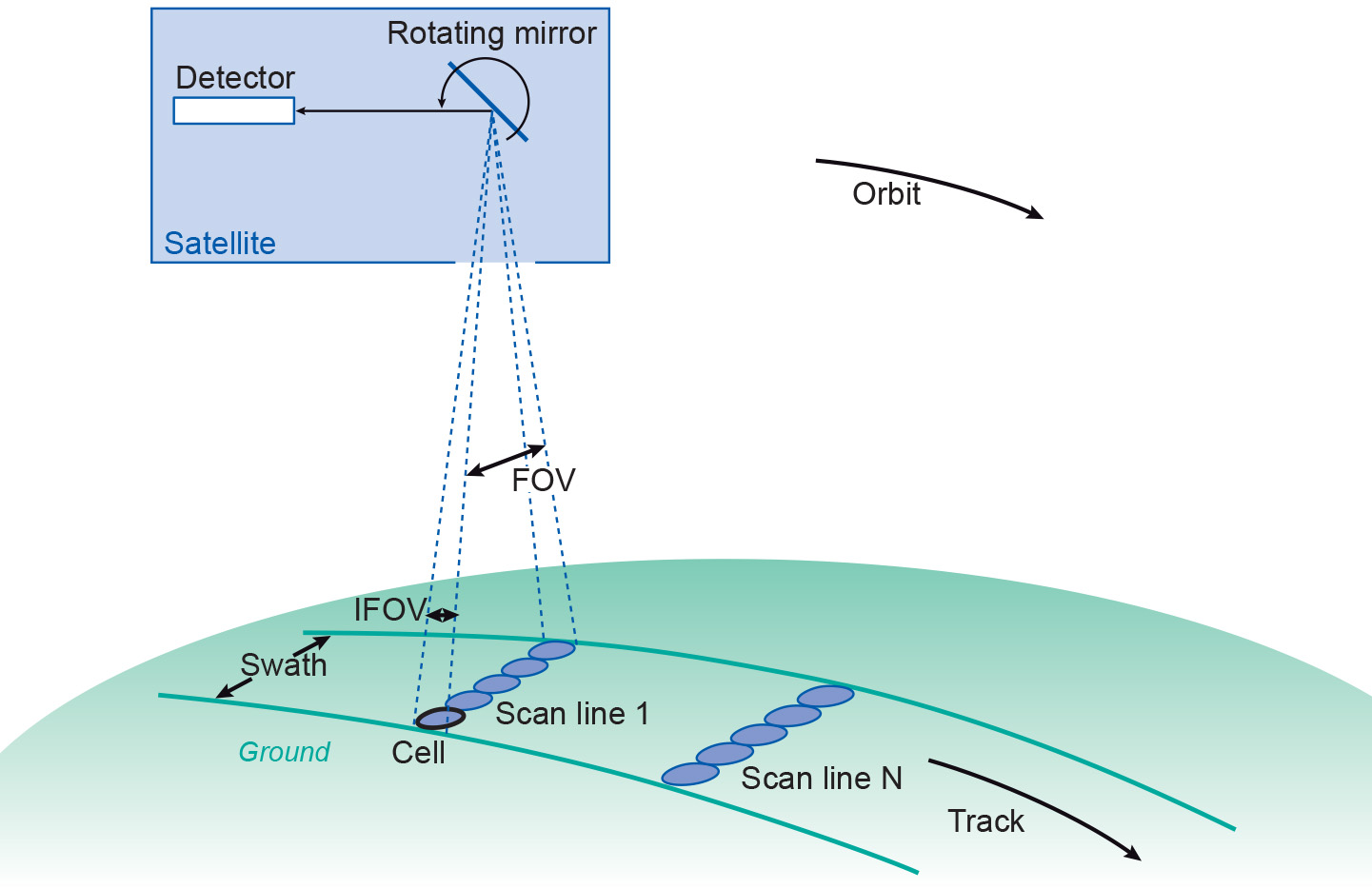Scanner
Introduction
A scanner is an electro-optical remote sensor with a scanning device, which is in most cases a mechanical component. In its simplest form (e.g. a thermal scanner operating in the 7 to 14 m range), it consists of the sensor rack, a single detector with electronics, a mirror, optics for focusing, and a storage device (see Figure).

A detector has a very narrow field of view (called the instantaneous field of view (IFOV)) of 2.5 milliradians or less. In order to image a large area, we have scan the ground across the track while the aircraft or space craft is moving. The most commonly-used scanning device is a moving mirror, which can be an oscillating mirror, a rotating mirror, or a nutating mirror. An alternative, which is used for laser scanning, is fiber optics.
Explanation
Scanners are used for sensing in a broad spectral range, from light to TIR and beyond, to microwave radiation. Photodiodes made of silicon are used for the visible and NIR bands. Cooled photon detectors (e.g. using mercury-cadmium-telluride semiconductor material) are used for thermal scanners.
Most scanners are multispectral scanners, thus sensing in several bands, often including TIR (such as NOAA’s AVHRR). As such, thermal scanners can be considered as being just a special type of multispectral scanner. A multispectral scanner has at least one detector per spectral band. Different from small-format frame cameras, for which filters are used to separate wavelength bands, scanners and line cameras use a prism and/or a grating as a beam splitter. A grating is a dispersion device used for splitting up SWIR and TIR radiation. Hyperspectral scanners also use gratings. A prism can split higher frequency radiation into red, green, blue, and NIR components. A simple RGB and NIR scanner produces in one sweep of the mirror a single image line for each of the four channels.
Instead of using only one detector per band, space-borne scanners use several. The first civil space-borne remote sensor, Landsat MSS (launched in 1972), used six per band. ASTER uses 10 detectors for each of its five TIR channels. One sweep of the mirror of the ASTER thermal scanner produces, thus, 10 image lines for each of the five channels. If one channel should fail, only every 10th line of an image would be black. Section ?? treats the correcting of an image for periodic line dropouts.
Synonyms
Optical scanner
Outgoing relations
- Scanner is a kind of Sensor